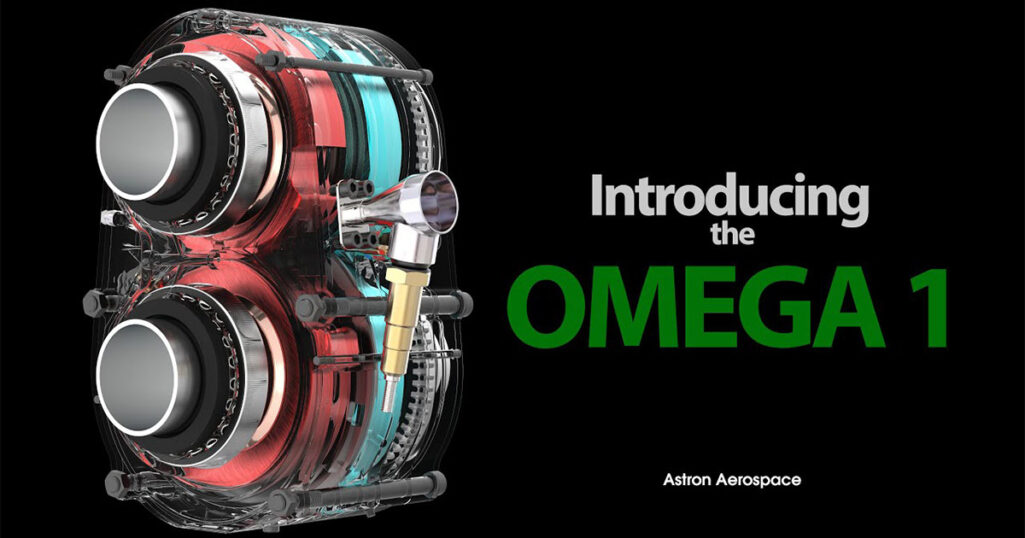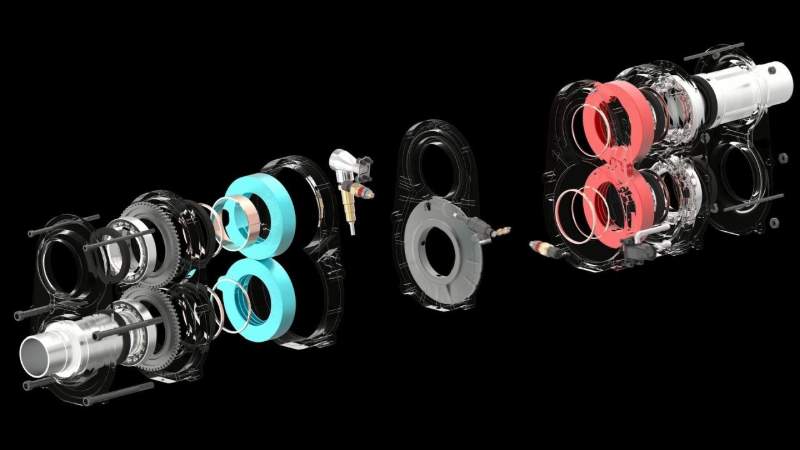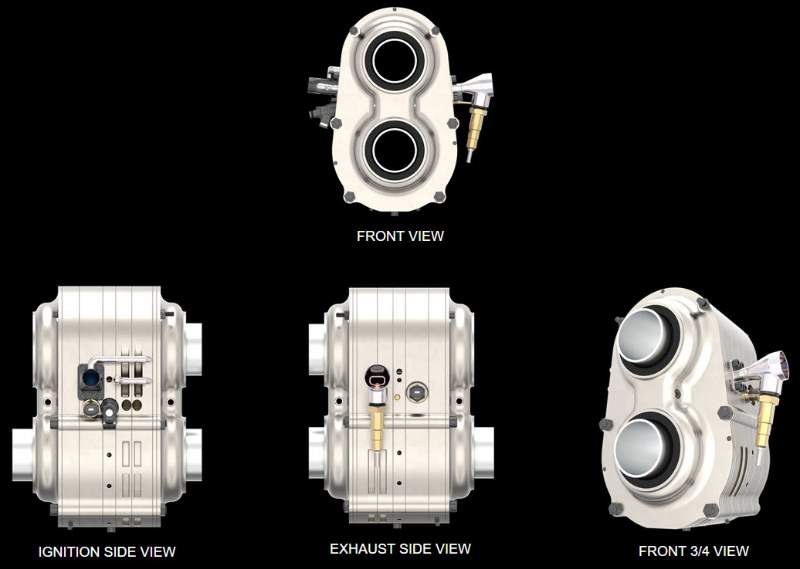
A fantastic turbo engine has been built by a small US startup business. Cars, ships, and airplanes might all benefit from the engine’s capabilities.
Astron Aerospace’s Omega 1 is an entirely original idea for an internal combustion engine, and when I say original, I mean it. When I initially saw the photos, I couldn’t understand what was going on. It appeared to be a stack of turbines, but it wasn’t. My first reaction was to assume it was some type of rotary engine, but it isn’t anything like the rotaries we’ve seen so far. It’s a clever idea. Let’s find out why it is?
What is Omega 1?

A single 35-pound (16 kg) engine develops 160 hp and 170 lb-ft of torque when idling at 1000 revolutions per minute (rpm) and reaching a redline of 25,000 rpm. All of the power of a single-engine is multiplied by the number of engines that may be placed end-to-end.
For example 5 engines will produce 160 hp x 5 = 800 hp, weighting 35 lb x 5 = 175 pounds (79 kg). This is an Incredibly high power to weight ratio.
How does it work?
Aerodynamic forces are eliminated since the engine is air-cooled, rotating shafts encircle the engine openings, and both upper and lower shafts counterrotate.
The colorful rotors on the intake and compression side of the engine, and the red rotors on the power and exhaust side, are the engine’s principal power-producing components.
The intake air is compressed and travels through a rotary valve to a pre-chamber between the rotors, where fuel is injected, and when it enters the power side rotor, it ignites, driving the rotor, and then leaves through the exhaust port. They recommend using hydrogen as a fuel for the engine, and the emissions will be nearly negligible.
Watch the videos and pause periodically to observe the process in action, and you’ll have an idea of how it all works.
Omega 1 Material

Titanium will be utilized to reduce weight in aviation engines first, but it is expected to be employed in nearly every internal combustion engine application imaginable. Aluminum will be used in situations where cost is an issue.
A wide range of industries might benefit from this technology, including commercial and recreational vehicles as well as generators and commercial trucks. If it works as advertised as a range extender for electric cars, then why bother with electric vehicles in the first place?

To keep up the momentum, the united team has a wealth of expertise in the automotive sector as well as in machining, engineering, and product development. They have a working prototype, but there is still a long way to go.
Conclusion
Although it has a lot of potentials, we’ve seen a lot of promising engines throughout the years, and whether it can advance to the next level will decide if it can succeed on a bigger scale. It will be an uphill battle to gain support and attention for this initiative in the current electrics-only era. You can’t get your point through if no one is willing to listen.
The development of internal combustion engines continues, as do the efforts of inventors with new concepts, and those who believe that the future belongs solely to electric vehicles should reevaluate their beliefs.
No comments:
Post a Comment